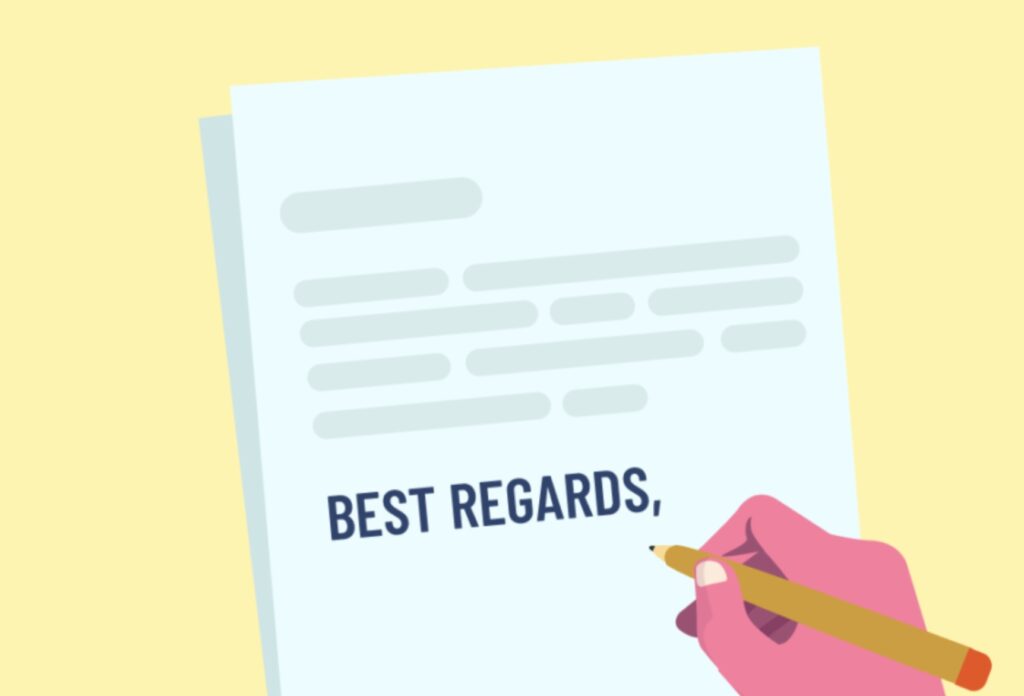Once you have found a suitable job posting, you apply. The question arises as to: how long should a cover letter be? You want to be as convincing as possible and include all of your qualifications and knowledge. But put yourself in the shoes of the HR department: Often a whole series of applications are received that have to be worked through. A superfluous cover letter is more of a deterrent. Being short, concise and to the point is the question of the hour.
Less is more is the answer to `how long should a cover letter be?´. Your application should be positively remembered by the HR manager. Highlight selected successes that are relevant to the position and highlight your motivation for the job. Do not write down your entire résumé in sentence form, you are anticipating too much. Leave out what is not relevant for the position. In no case should you simply repeat the statements and stations in the CV in the cover letter. That would be redundant, and then you will never get by with the space.
So what is the basic rule for: How long should a cover letter be? The basic rule is: Write one or a maximum of two pages and state in a simple, clear and compact way why you are particularly well suited for the position.
Formatting and how long should a cover letter be?: Use a common font and a font size between 10 and 12 pt. The line spacing should be 1.2, or even better, 1.5 lines. It is important that the writing is legible. It is therefore not recommended to compress a long cover letter onto one page with a small font and missing paragraphs.
All important and interesting information can also be put on one page without tiring your counterpart with too many details and poorly legible formatting. Nested sentences with plenty of commas and the excessive use of foreign words should also be avoided. Show that you can express yourself clearly and precisely.
Make a good impression by highlighting your strongest arguments and making the HR manager curious about your further documents.
Writing a cover letter
Is what is the content of writing a cover letter´ as important as how long should a cover letter be´? Yes! When writing a cover letter, following writing steps need to be taken into account:
- Introduction referring to the position to be filled.
- Personal salutation.
- An original introductory sentence.
- A reference to the advertised position and the company.
- Your motivation and passion for the job and position.
- Information on working methods and soft skills (personality).
- A smart closing sentence that resonates and makes the counterpart curious for more.
- A PS (Post Scriptum), the greeting and signature
How long should a cover letter be for anyone who has already done a lot in life – for example, experienced professionals and managers with more than ten years of well-founded professional experience – can of course go into more detail here.
Trust the persuasiveness of your own arguments. Those who tend to justify tend to make themselves untrustworthy. It is better to try to refine the cover letter, to condense it and to cross out irrelevant things, until everything in the application letter fits on one page.
How long should a cover letter be?
You will notice: Numerous but selected successes can be presented on a DIN A4 page and the high level of motivation for the work environment can be emphasized. And those are just strong arguments in terms of attitude.
That also conveys another sub-message: I know exactly who I am. I know what interests me – and I am able to focus on it as well as on the essentials. This is a strength that later contributes massively to success in numerous meetings, conversations and work modalities. In short, how long should a cover letter be, can also be defined by its qualitative content.
How to address a cover letter
How to address a cover letter can vary depending on the information available. The formal salutation `Dear Sir or Madam´ is not wrong. It is neutral, always correct, but also arbitrary and interchangeable.
Application guides have therefore been recommending for years that the application should be addressed to a recipient who is as specific as possible and who is known by name. Dear Ms. Miller, sounds much more personal than dear Sir or Madam.
But how to address a cover letter if no contact person is named in the job advertisement? What is the salutation then? In this case there are two options:
- You choose the neutral salutation `Dear Sir or Madam´. Not wrong, but also impersonal. You can tear that out with an original cover letter. But option two is better – even if it takes more effort.
- Find the right contact person. Sometimes you can find the information on the employer’s careers page. Partly also on the company’s website, if the HR department is listed there in detail. You can also get to the telephone number via the imprint of the website and ask the personnel department. Sometimes the responsible employees of the social media pages (on Facebook, Twitter or Instagram) will also help you if you ask them politely.
How to end a cover letter
How to end a cover letter is as much important as how to start a cover letter. The first impression counts. But also the last one. Ideally, you should make a great impression both at the beginning and at the end of your cover letter. If you frame it with two highlights, the HR manager will definitely keep you in mind. The attention is certain to you.
In the final sentence, your motivation should above all be recognizable. You should get out of the cover letter with confidence. You have just shown that you are the best choice for the position and why your qualifications match the job profile exactly. Now underline these statements again.
You also bring a lot with you: formal qualifications and soft skills, experience, knowledge and ambition. That is why it is inappropriate to act like a supplicant – especially not at the end. Please do NOT thank “for your attention” in the final sentence. You are just dwarfing yourself. No need.
Other possibility to: How to end a cover letter: incorporate call-to-action.
Marketing people know: the so-called call-to-action works. If you ask someone to do something, they are much more likely to actually do it than if they are not asked to.




